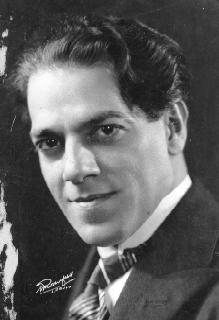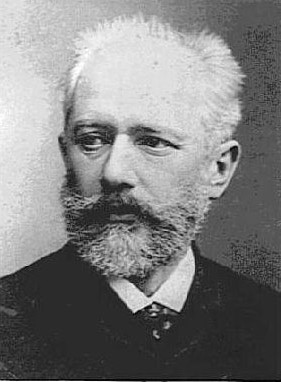A concerto is, from the late Baroque era, mostly understood as an instrumental composition, written for one or more soloists accompanied by an orchestra or other ensemble. The typical three-movement structure, a slow movement preceded and followed by fast movements, became a standard from the early 18th century.

Heitor Villa-Lobos was a Brazilian composer, conductor, cellist, and classical guitarist described as "the single most significant creative figure in 20th-century Brazilian art music". Villa-Lobos has become the best-known South American composer of all time. A prolific composer, he wrote numerous orchestral, chamber, instrumental and vocal works, totaling over 2,000 works by his death in 1959. His music was influenced by both Brazilian folk music and stylistic elements from the European classical tradition, as exemplified by his Bachianas Brasileiras and his Chôros. His Etudes for classical guitar (1929) were dedicated to Andrés Segovia, while his 5 Preludes (1940) were dedicated to his spouse Arminda Neves d'Almeida, a.k.a. "Mindinha". Both are important works in the classical guitar repertory.

Edward Elgar's Cello Concerto in E minor, Op. 85, his last major completed work, is a cornerstone of the solo cello repertoire. Elgar composed it in the aftermath of the First World War, when his music had already become out of fashion with the concert-going public. In contrast with Elgar's earlier Violin Concerto, which is lyrical and passionate, the Cello Concerto is for the most part contemplative and elegiac.
The Cello Concerto in B minor, Op. 104, B. 191, is the last solo concerto by Antonín Dvořák. It was written in 1894 for his friend, the cellist Hanuš Wihan, but was premiered in London on March 19, 1896, by the English cellist Leo Stern.

The Cello Concerto of Pyotr Ilyich Tchaikovsky is a conjectural work based in part on a 60-bar fragment found on the back of the rough draft for the last movement of the composer's Sixth Symphony, the Pathétique. In 2006, Ukrainian composer and cellist Yuriy Leonovich completed the work.

Alisa Weilerstein is an American classical cellist. She was named a 2011 MacArthur Fellow.
Tsuyoshi Tsutsumi is a world renowned Japanese cellist. In an international career which began in 1954, Tsutsumi has performed and recorded all of the principal standard works in the cello repertoire, both solo and concerto. He has appeared as soloist with the Vienna Philharmonic Orchestra, the Royal Concertgebouw Orchestra of Amsterdam, the Leipzig Gewandhaus Orchestra, the London Symphony Orchestra, the Chicago Symphony Orchestra, the Boston Symphony Orchestra, and the National Symphony Orchestra of Washington D.C..
The Strathclyde Concertos are a series of ten orchestral works by the English composer Sir Peter Maxwell Davies.

Antônio Meneses was a Brazilian cellist and academic teacher. After Meneses won the first prize and gold medal at the 1982 International Tchaikovsky Competition in Moscow, he performed as a soloist with orchestras such as the Berlin Philharmonic, New York Philharmonic, and London Symphony Orchestra and with conductors such as Claudio Abbado, Kurt Sanderling, and Herbert von Karajan. He was the cellist of the Beaux Arts Trio from 1998 to 2008 and collaborated in recital with pianists such as Nelson Freire and Maria João Pires. He taught at the Bern Academy of Arts. The Strad wrote that he "was one of the most acclaimed soloists and chamber musicians of his generation".

The Cello Concerto No. 2, W516, was composed by Heitor Villa-Lobos in Rio de Janeiro in 1953. It was commissioned by the cellist Aldo Parisot, to whom the score is dedicated. A reduction for cello and piano was published in Paris by Max Eschig.
The Variations on a Rococo Theme, Op. 33, for cello and orchestra was the closest Pyotr Ilyich Tchaikovsky ever came to writing a full concerto for cello and orchestra. The style was inspired by Mozart, Tchaikovsky's role model, and makes it clear that Tchaikovsky admired the Classical style very much. However, the Theme is not Rococo in origin, but actually an original theme in the Rococo style.

The Cello Concerto, Op. 27, is a concerto for cello and orchestra by Graham Waterhouse, composed in 1990. It was first performed in 1995 in Toluca and Mexico City with the composer as the soloist, and published by Friedrich Hofmeister Musikverlag in Leipzig in 2000.

Chôros No. 11 is a work for piano and orchestra written in 1928 by the Brazilian composer Heitor Villa-Lobos. It is part of a series of fourteen numbered compositions collectively titled Chôros, ranging from solos for guitar and for piano up to works scored for soloist or chorus with orchestra or multiple orchestras. Chôros No. 11 is the longest in the series, a performance lasting over an hour.

Symphony No. 3 is a composition by the Brazilian composer Heitor Villa-Lobos, written in 1919. A performance lasts about 35 minutes.

Symphony No. 5, A Paz (Peace) is a composition by the Brazilian composer Heitor Villa-Lobos, written in 1920. The score has been lost.

Symphony No. 11 is a composition by the Brazilian composer Heitor Villa-Lobos, written in 1955. A performance lasts about twenty-five minutes.

The Piano Concerto No. 4, W505, is a composition for piano and orchestra by the Brazilian composer Heitor Villa-Lobos, written in 1952. A performance lasts about 27 minutes.

Piano Concerto No. 1, W453, is a composition for piano and orchestra by the Brazilian composer Heitor Villa-Lobos, written in 1945. A performance lasts about 38 minutes.

The Guitar Concerto, W501, is a work for solo guitar and small orchestra written by the Brazilian composer Heitor Villa-Lobos in Rio de Janeiro in 1951. A performance lasts about 18 minutes.







